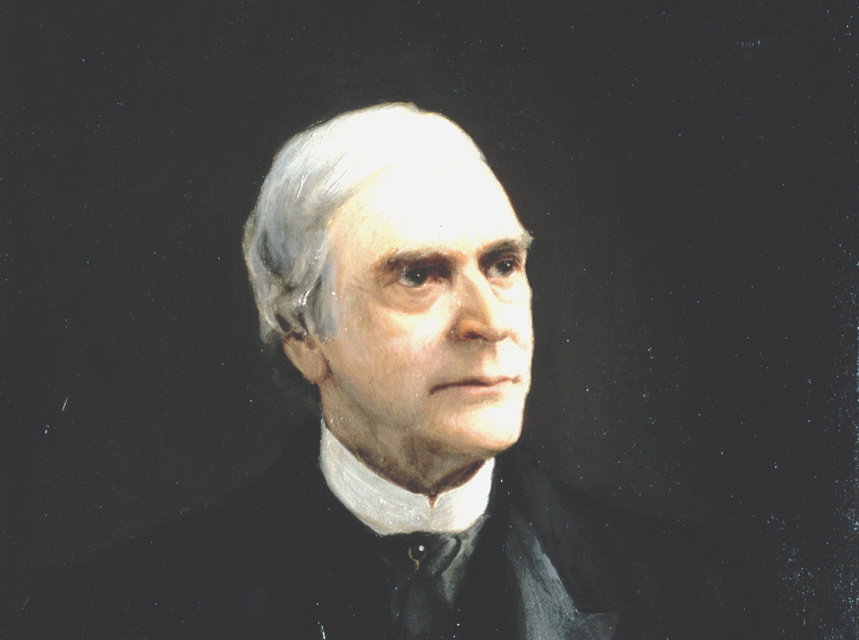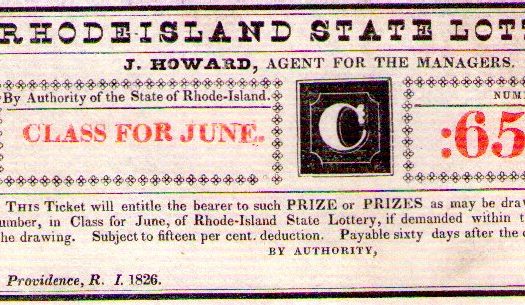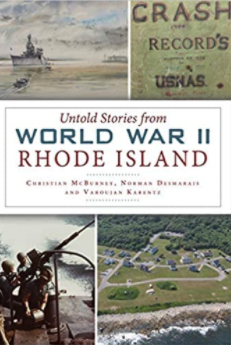[Note from the Editor: The following list is excerpted from “American Millionaires, The Tribune’s list of all Americans reputed to be worth a million or more,” published by The Tribune Monthly magazine, Vol. IV, No. 6 in June, 1892. This list was not based on a scientific study. It was then even more difficult back then than it is today to estimate accurately a private person’s wealth, but this article makes good faith estimates. In some cases, a millionaire’s estate could be valued after the millionaire had passed away. I have added further comments following the list.]
[The list is organized by state. The list below is for Rhode Island.]
CITY OF NEWPORT.
GEORGE R. FEARING. Inherited from Daniel Fearing, of New York City, who made a fortune in mercantile business and large Investments in real estate.
MRS. GEORGE R. FEARING. From her father, William R. Travers, who made a large fortune in Wall Street.
DANIEL B. FEARING. From his father, Daniel B. Fearing, of New York City. Made in mercantile business and real estate.
- P. FEARING. Made chiefly In real estate in New York City.
Estate of CHRISTOPHER TOWNSEND. Made In business in New York City.
Estate of HENRY S. FEARING. Large real estate interests in Newport.
GEORGE H. NORMAN. Contracting, building water works and investments.
Mrs. EDWARD KING. Inherited. Made in the China trade, in tea and silk especially.
GEORGE PEABODY WETMORE. Inherited several millions from his father, W. S. Wetmore. Made originally in the China trade and added to by investments.
WILLIAM GAMMELL. From Brown & Ives. Made in the East India trade in early times, and cotton manufacturing since.
Mrs. WILLIAM GAMMELL. From her father, Robert Ives, of Brown & Ives. Made in the East India trade in early times, and in real estate and manufacturing investments at a later period. Robert Ives left a fortune of over $20,000,000.
Mrs. JOHN CARTER BROWN. Inherited from the firm of Brown & Ives. Made in the East India trade, and subsequent investment in real estate and manufactories. John Carter Brown left more than $20,000,000.
Estate of ALFRED SMITH. Made In dealing in real estate, chiefly at Newport.
LORILLARD SPENCER. Inherited. Made in tobacco manufacturing and real estate. He has numerous investments, and is president of the Illustrated American Publishing Company.
Estate of SETH BATEMAN. Banking.
(For many summer residents of Newport, see list for New York City.)
PASCOAG.
ALBERT L. SAYLES. Manufacturing woollen goods. Interested in A. L. Sayles & Co. and F. L. Sayles & Co., both cotton manufacturers.
PAWTUCKET.
DAVID GOFF (of D. Goff & Sons). Made first in the manufacture of cotton wadding, the company making a great deal of money during the war. In 1861 they started the manufacture of worsted braid, which would have been a failure except for the tariff of 1867. Ten years ago they added the making of mohair plushes. The tariff had nothing to do with the foundation of this fortune.
WILLIAM F. SAYLES (of W. P. and F. C. Sayles). Bleaching and dyeing; and banking. President of the Slater National Bank.
- C. SAYLES. Bleaching and dyeing, in partnership with William P. Sayles.
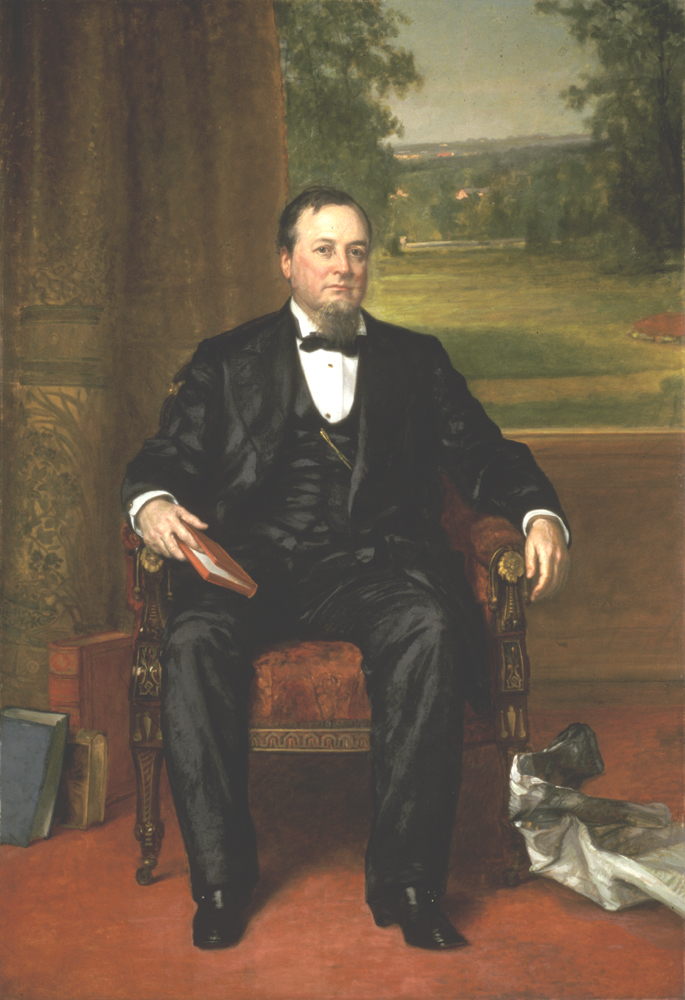
William Francis Sayles (1824-1894), by George Healy in 1889. Born in Pawtucket, he rose from the position of bookkeeper to controlling two-thirds of all the fine-grade cotton cloth manufactured in the United States. Sayles Hall at Brown University, named for his son who died in his sophomore year at Brown, was completed in 1881. (Brown University Portrait Collection)
PEACE DALE.
Estate of ROWLAND G. HAZARD. Made over two millions in the manufacture of woollen goods and shawls; and investments in real estate, railroads, etc.
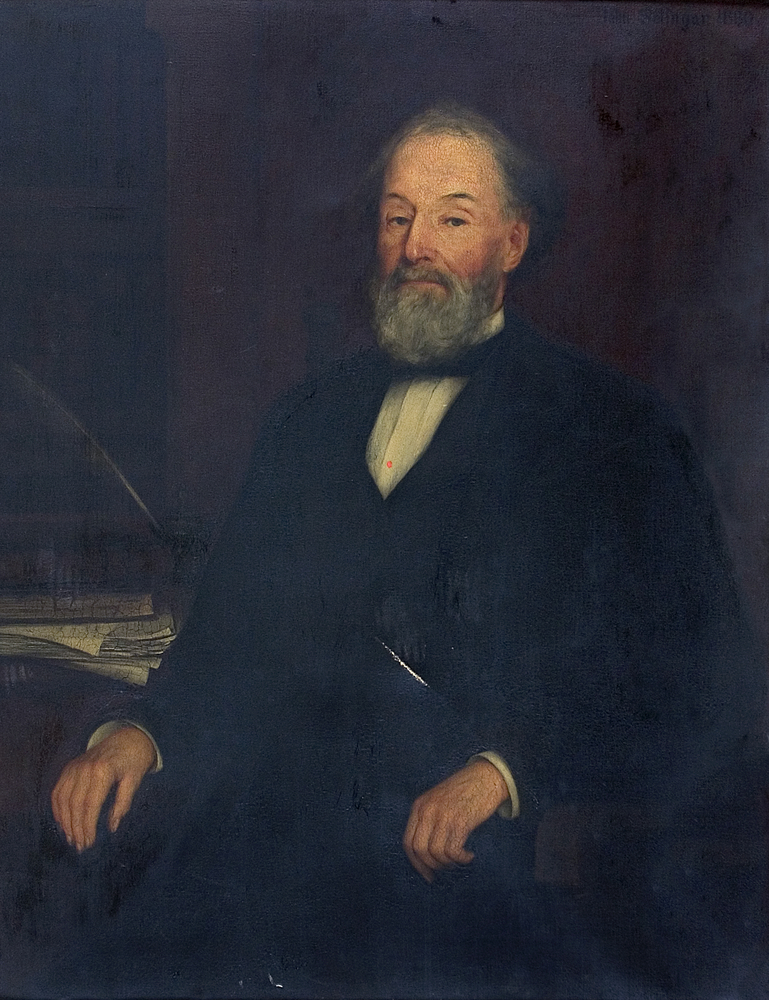
Rowland Gibson Hazard (1801-1888) by Jean Paul Selinger in 1880. He was born into a Quaker family in South Kingstown. He developed an important textile mill in Peace Dale that sold “slave cloth” for clothing enslaved people in the South. Objecting to slavery, he actually got out of the business earlier than most other Rhode Island textile merchants and prior to the outbreak of the Civil War. He endowed the Hazard Professorship of Physics at Brown University. His eldest son adopted a profit-sharing plan for his mill workers at Peace Dale. (Brown University Portrait Collection)
PROVIDENCE.
Estate of LAURISTON HALL. Partly made in manufacturing in Providence, but largely in lands in Minnesota.
Estate of GEORGE H. CORLISS. Manufacturing the famous Corliss steam engine; patents.
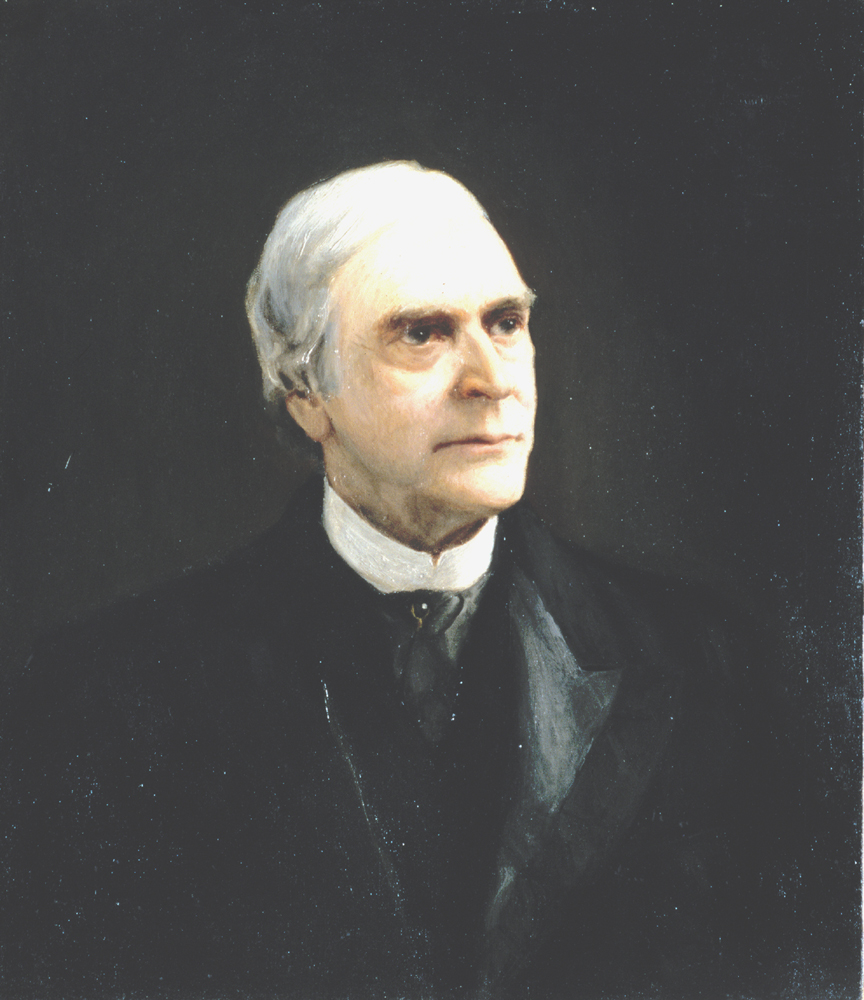
George Corliss (1817-1888), by unknown artist. Born in Easton, New York, Corliss came to Providence in 1844. In 1848, he revolutionized the steam engine by inventing a fuel-saving valve. In 1876, his famed 1,400 horse power Corliss Engine, weighing 776 tons, was transported to Philadelphia for the Centennial Exposition, where it powered all the machines at the fair. His beautiful home was given by a descendant to Brown University in 1955 and now serves as the school’s admissions office. (Brown University Portrait Collection)
WILLIAM GODDARD. Fortune founded in the East India trade with Brown & Ives; increased lately in cotton manufacturing and various investments. President of the Providence National Bank and the Providence Institution for Savings. The Goddard Brothers are agents of the Lonsdale Company.
- P. I. GODDARD. Fortune founded by Brown & Ives in the East India trade, and increased by cotton manufacturing and investments. The Goddard Brothers are agents of the Lonsdale Company.
ROBERT GODDARD. Fortune forwarded by Brown & Ives in the East India trade, and increased by cotton manufacturing and Investments. The Goddard. Brothers are agents of the Lonsdale Company.
Estate of J. B. BARNABY. Made in the sale of clothing.
- NICHOLAS BROWN. Fortune founded by Brown & Ives in the East India trade, and increased lately by cotton manufacturing.
- H. GAMMELL Fortune founded by Brown & Ives in the East India trade, and increased lately by cotton manufacturing.
HAROLD BROWN. Fortune founded by Brown & Ives in the East India trade, and increased lately by cotton manufacturing.
BENJAMIN B. KNIGHT (of B. B. & R. Knight). Manufacture and bleaching of cotton goods. President of Butchers and Drovers’ Bank.
ROBERT KNIGHT (of B. B. & R. Knight). Cotton manufacturing and bleaching, etc. President of National Bank of Commerce and the People’s Savings Bank.
HENRY LIPPITT (of Henry Lippitt & Co.). Manufacturing cotton and woollen goods. President of Rhode Island National Bank

Henry Frederick Lippitt (1856-1933), by an unknown artist. When he was nine years old, the family moved into a grand brick house at the corner of Hope and Waterman Streets on the East Side of Providence. His father, Henry Lippitt, was elected governor in 1875 and thereafter the house was known as the “Governor Lippitt House.” Henry Frederick Lippitt, after graduating from Brown University in 1878 joined the family textile merchant business. He served as U.S. Senator from Rhode Island from 1911 to 1917. (Brown University Portrait Collection)
HENRY C. RUSSELL. Made in shipping and manufacturing, etc. President of the Union Bank.
JOHN W. SLATER. Manufacturing cotton and woollen goods.
JOSEPH BANIGAN. Manufacturing rubber goods.
AMOS C. BARSTOW. Stove, furnace and general iron manufacturing. President of the City National Bank.
Estate of CYRUS BUTLER. Real estate and banking.
Estate of EDMUND DAVIS. Manufacturing “Pain Killer” and other proprietary medicines.
CHARLES FLETCHER. Manufacturing woollen goods.
Estate of DR. WILLIAM GROSVENOR. Manufacturing cotton goods.
EDWARD HAIM. Woollen manufacturing.
HENRY S. HIDDEN. Cotton cloth dealings and banking.
JESSE METCALF. Woollen manufacturing. President of the National Bank of North America.
Estate of HENRY J. STEERE. Manufacturing woollens; banks, horse railroads, etc. Had an interest in the American Screw Company, which conducted an immense business In the manufacture of patented, gimlet pointed screws.
MARSHALL WOODE. Real estate and banking.
WOONSOCKET.
Estate of EDWARD HARRIS.–Made several millions in the manufacture of woollen cloth for men’s clothing. The Harris cloths were famous: and he had the largest woollen factory in the United States.
Comments by Christian McBurney:
RECAPITULATION.
Number of millionaires in industries protected by a federal tariff: 28
Number of millionaires in the manufacture of patented articles: 2
Number of millionaires in industries not protected by a federal tariff: 16
Total industries: 46
Comments by the Editor:
As indicated above, the list contains 46 Rhode Island millionaires. By comparison, within New England, Maine had 15 millionaires, New Hampshire 14, and Vermont 13. Rhode Island’s success in this regard is due mostly to the manufacturing of woolens and cotton fabric and clothing. (The much larger Connecticut had 78 millionaires and Massachusetts 296).
Providence had the most millionaires in the state with 24, followed by Newport with 15, Pawtucket with 3, Woonsocket with 2, Peace Dale with 1, and Pascoag with 1.
Of Newport’s 15 millionaires, about 9 of them earned their wealth outside of Rhode Island on Wall Street or in making other investments from New York City, and then moved to Newport. They preferred to live in Newport year-round, not just in the summer. A few of the Newport millionaires who earned their money in Rhode Island apparently had success selling real estate to the wealthy summer residents from New York City. Bert Lippincott of the Newport Historical Society informed me that Alfred Smith developed posh Bellevue Avenue in Newport. The list also mentions that many New York City millionaires would spend their summers in Newport.
Interestingly, 9 of the fortunes began with the Providence shipping company of Brown & Ives, which specialized in trade with India and China in the first half of the 19th century. Nicholas Brown started the company in 1792, and his son John Carter Brown took it over at his father’s death in 1841 and ran it until his demise in 1874. In the meantime and afterwards, the company had successful partners outside the Brown family. The money gained was invested in new businesses, such as manufacturing and banking.
Many of the fortunes, 22 of them, came from manufacturing wool and cotton in Rhode Island mills.
Some of the other manufacturing businesses were rubber manufacturing by Joseph Banigan, who then owned the United States Rubber Company in Bristol; the estate of George Corliss, who gained national prominence by manufacturing steam engines; and Amos Barstow, from manufacturing stove, furnace and iron products. Banigan became Rhode Island’s first Catholic millionaire.

Joseph Banigan (1839-1898) by Hugo Breull in 1899. He was born in Ireland in 1839 and then immigrated to New England to escape the potato famine. By 1866, he had founded a rubber manufacturing company at Woonsocket, which manufactured mainly boots and shoes. It became highly profitable. By 1893 his company imported more rubber than any other manufacturer in the United States. By 1891 he had created a company that gained a monopoly in washing machine wringers. He built the Banigan Building at 10 Weybosset Street, in Providence, in 1896. It was considered the first skyscraper in the city. It still stands today. (Brown University Portrait Collection)
Perhaps the most interesting business of a millionaire was that of Edmund Davis, who manufactured and peddled “Pain Killer” and other proprietary medicines. Edmund’s ancestor, Percy Davis, started business in Providence in 1841. He established a company that manufactured “Percy Davis’ Pain Killer,” which was sold worldwide. As with most of these concoctions prior to the founding of the Food and Drug Administration, it was adulterated with alcohol and other drugs; this one was laced with a lot of opium. It made the Davis family very wealthy.
The year 1892 was only 31 years after the start of the Civil War. Some of the cotton manufacturing businesses would have used cotton from the South, and some of the textile manufacturers produced kersey, which was a poor quality textile used for clothing for enslaved people in the South. Other manufacturers would have profited as contractors to the Union forces during the war. More specifically, the summary says above that David Goff first became wealthy through his ownership of D. Goff & Sons, which “made a great deal of money during the war” manufacturing cotton wadding. (Cotton wadding was probably used for bandages, and also for layering fabrics for bedding, which was needed by the hundreds of thousands of Union soldiers).
It is surprising that the owners of some legendary Rhode Island businesses are missing from the above list. For example, there are no owners of the firm that would become Brown & Sharpe, maker of machine tools, the founder of Nicholson File Company, maker of fine files, or the owners of Gorham Manufacturing Co., maker of silverware and other silver objects. Their businesses would expand in the years to come. Edward Steere is mentioned above having an equity interest in Providence’s American Screw Company.
Patrick T. Conley commented that while the list includes Joseph Banigan, it may have missed two other sets of Irish-American millionaires from Providence—Thomas and William Gilbane (construction) and James Hanley (Brewer).
The list indicates that 28 of the 46 millionaires benefitted from the tariff. Why was the tariff mentioned in the article? Some critics of millionaires complained that many of them benefitted from the federal tariff on protected products imported into the U.S. The tariff protected cotton and wool mills, as well as other industries. The tariff could increase the price of a product by as much as 30 to 40 percent. The tariff protected mill worker jobs as well. Accordingly, the tariff was crucial for Rhode Islanders (as well as many New Englanders). At the time, the tariff was the greatest source of revenue for the federal government, as there was no income tax.
Rhode Island’s mills and manufacturing businesses would expand into the early 20th century. The growth helped workers too, who would earn the highest average wages of any state in the country.

